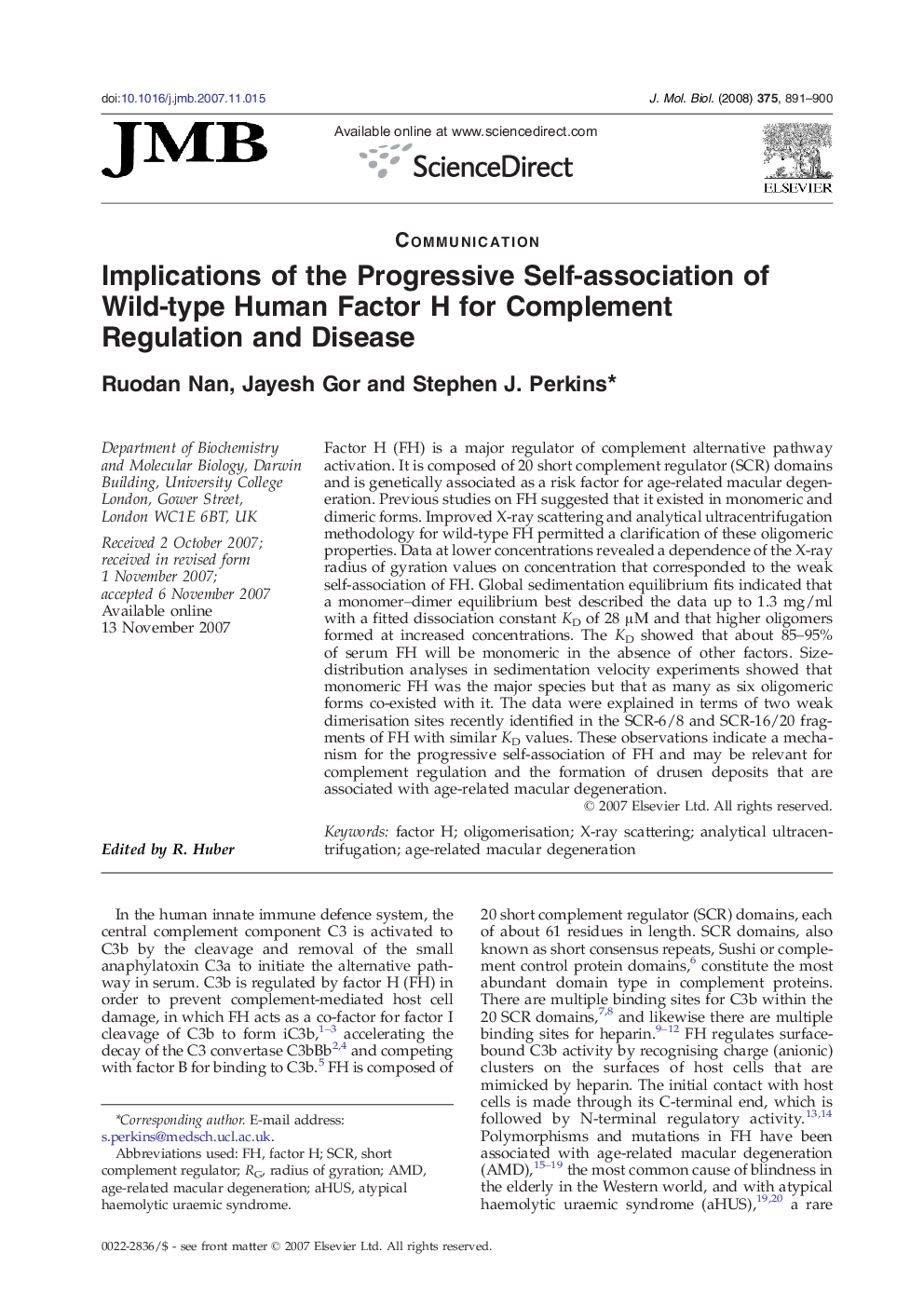| کد مقاله | کد نشریه | سال انتشار | مقاله انگلیسی | نسخه تمام متن |
|---|---|---|---|---|
| 2187589 | 1096128 | 2008 | 10 صفحه PDF | دانلود رایگان |

Factor H (FH) is a major regulator of complement alternative pathway activation. It is composed of 20 short complement regulator (SCR) domains and is genetically associated as a risk factor for age-related macular degeneration. Previous studies on FH suggested that it existed in monomeric and dimeric forms. Improved X-ray scattering and analytical ultracentrifugation methodology for wild-type FH permitted a clarification of these oligomeric properties. Data at lower concentrations revealed a dependence of the X-ray radius of gyration values on concentration that corresponded to the weak self-association of FH. Global sedimentation equilibrium fits indicated that a monomer–dimer equilibrium best described the data up to 1.3 mg/ml with a fitted dissociation constant KD of 28 μM and that higher oligomers formed at increased concentrations. The KD showed that about 85–95% of serum FH will be monomeric in the absence of other factors. Size-distribution analyses in sedimentation velocity experiments showed that monomeric FH was the major species but that as many as six oligomeric forms co-existed with it. The data were explained in terms of two weak dimerisation sites recently identified in the SCR-6/8 and SCR-16/20 fragments of FH with similar KD values. These observations indicate a mechanism for the progressive self-association of FH and may be relevant for complement regulation and the formation of drusen deposits that are associated with age-related macular degeneration.
Journal: Journal of Molecular Biology - Volume 375, Issue 4, 25 January 2008, Pages 891–900